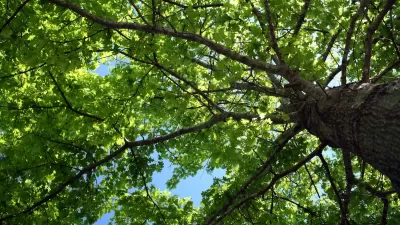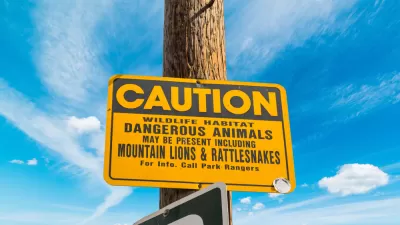A legacy of historic housing discrimination and disinvestment is having lasting effects on more than just human lives in cities.

An article by Dorany Pineda on Phys.org describes how bird population distribution in Los Angeles is shaped by historic development and discrimination patterns.
As Pineda explains, researchers from Cal State Los Angeles are studying the presence of birds in various neighborhoods to understand how density, tree canopy, and other factors impact where different species of urban birds can successfully live. The research was “a vivid illustration of the so-called luxury effect—the phenomenon by which wealthier, and typically whiter, areas attract a larger and more diverse population of birds.”
According to the researchers, “Historically redlined nonwhite communities, such as Boyle Heights, have less tree canopy and greater housing density than greenlined neighborhoods. As a result, these areas have less bird biodiversity and larger populations of synanthropic birds—species adapted to dense urban environments such as house finches and sparrows, European starlings, common pigeons and northern mockingbirds.” By contrast, ‘greenlined’ areas have more trees and thus a greater diversity of bird species.
The study is another example of the lasting impacts of redlining and other discriminatory policies that continue to affect American cities. “Other researchers have found strong links between historically redlined communities and increased risks of diabetes, hypertension and early mortality from heart disease. Redlined communities are also hotter and have more pollution and less canopy cover and green spaces than non-redlined regions, studies show.”
The study authors note that to promote urban biodiversity equitably, “cities across the U.S. and the world must work to understand their racist and segregationist histories, which is a necessary step toward creating conditions that support urban wildlife along with a more equitable experience of wildlife for a city's inhabitants.”
FULL STORY: How LA's bird population is shaped by historic redlining and racist loan practices

Alabama: Trump Terminates Settlements for Black Communities Harmed By Raw Sewage
Trump deemed the landmark civil rights agreement “illegal DEI and environmental justice policy.”

Study: Maui’s Plan to Convert Vacation Rentals to Long-Term Housing Could Cause Nearly $1 Billion Economic Loss
The plan would reduce visitor accommodation by 25% resulting in 1,900 jobs lost.

Planetizen Federal Action Tracker
A weekly monitor of how Trump’s orders and actions are impacting planners and planning in America.

Waymo Gets Permission to Map SF’s Market Street
If allowed to operate on the traffic-restricted street, Waymo’s autonomous taxis would have a leg up over ride-hailing competitors — and counter the city’s efforts to grow bike and pedestrian on the thoroughfare.

Parklet Symposium Highlights the Success of Shared Spaces
Parklets got a boost during the Covid-19 pandemic, when the concept was translated to outdoor dining programs that offered restaurants a lifeline during the shutdown.

Federal Homelessness Agency Places Entire Staff on Leave
The U.S. Interagency Council on Homelessness is the only federal agency dedicated to preventing and ending homelessness.
Urban Design for Planners 1: Software Tools
This six-course series explores essential urban design concepts using open source software and equips planners with the tools they need to participate fully in the urban design process.
Planning for Universal Design
Learn the tools for implementing Universal Design in planning regulations.
Caltrans
Smith Gee Studio
Institute for Housing and Urban Development Studies (IHS)
City of Grandview
Harvard GSD Executive Education
Toledo-Lucas County Plan Commissions
Salt Lake City
NYU Wagner Graduate School of Public Service





























